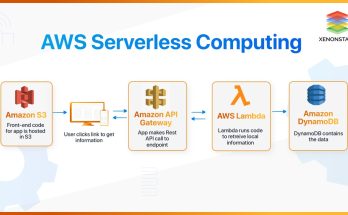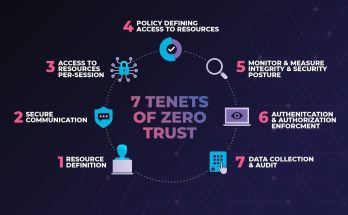The gaming industry stands as a vibrant testament to perpetual innovation, continuously pushing the boundaries of technology and creative expression. In 2025, we are witnessing an exciting evolution, marked by advancements that are fundamentally reshaping how games are developed, played, and experienced. These trends are not isolated phenomena but interconnected forces, creating a richer, more immersive, and increasingly personalized world for gamers worldwide.
One of the most significant shifts defining the current gaming landscape is the escalating prominence of **cloud gaming**. This technology liberates players from the need for expensive, high-end hardware, allowing them to stream graphically intensive games directly to a myriad of devices, from smartphones and smart TVs to low-spec PCs. Services like Xbox Cloud Gaming and Nvidia GeForce Now are rapidly gaining traction, democratizing access to AAA titles for a broader audience. The convenience of seamless cross-platform play – starting a game on a console, continuing on a PC, and finishing on a mobile device – is becoming a standard expectation. This shift is not merely about accessibility; it’s about making gaming an everywhere, anytime experience, fundamentally altering consumer spending habits away from solely hardware towards subscriptions and streaming devices. The continuous improvement in low-latency streaming and adaptive bitrate technologies, often powered by AI, is making the cloud gaming experience virtually indistinguishable from local play, a critical factor for competitive genres.
Concurrently, **Artificial Intelligence (AI)** is no longer just a feature within games but a transformative force in both game development and the player experience. In 2025, AI is enabling the creation of more intelligent, dynamic, and responsive game worlds. Non-Player Characters (NPCs) are becoming increasingly sophisticated, reacting to player choices in real-time, engaging in more natural conversations, and adapting their strategies in competitive scenarios. Imagine an enemy AI that learns from your combat style and adjusts its tactics on the fly, providing a truly unpredictable and challenging opponent. Beyond in-game intelligence, generative AI is revolutionizing the development pipeline itself. It’s being used to procedurally generate vast landscapes, intricate quests, unique dialogue, and even entire storylines, allowing smaller development teams to create expansive, detailed worlds with unprecedented efficiency. This speeds up content creation, reduces repetitive tasks, and allows developers to focus on artistic vision and core gameplay, ultimately leading to richer and more diverse gaming experiences for players.
The quest for deeper immersion continues to drive the integration of **Virtual Reality (VR) and Augmented Reality (AR)** into mainstream gaming. While still evolving, these technologies are no longer niche; advancements in hardware, such as lighter headsets with superior resolution and wider fields of view, are making VR experiences more comfortable and compelling. VR titles are pushing the boundaries of presence, allowing players to physically embody their avatars and interact with virtual worlds in incredibly intuitive ways. Games that combine physical movement with digital interaction are blurring the lines between exercise and entertainment. AR, meanwhile, continues to seamlessly blend digital elements into our physical environments, exemplified by the enduring popularity of mobile AR games that overlay digital characters and challenges onto the real world. This integration of AR and VR is fostering more lifelike and engaging experiences, opening up new possibilities for storytelling and gameplay that extend beyond traditional screens.
Furthermore, the concept of the **Metaverse** is becoming increasingly tangible within the gaming sphere. Platforms like Roblox and Fortnite are evolving into complex, interconnected virtual worlds where gaming intersects with social interaction, live events, and even commerce. These environments allow players to socialize, attend virtual concerts with millions of others, participate in creator-driven tournaments, and even engage in virtual economies where user-generated content and digital assets hold real value. The aspiration is to create persistent, shared digital spaces where players can seamlessly transition between different experiences, fostering a unified digital playground. While a singular, universal metaverse is still a futuristic vision, the building blocks are firmly in place, driven by these gaming platforms that are cultivating vast, interconnected communities.
Lastly, the impact of **Blockchain and Web3 technologies** on gaming, particularly in the realm of digital ownership and play-to-earn models, continues to evolve. While facing challenges related to onboarding complexity and sustainability, blockchain technology offers players true ownership of in-game assets through Non-Fungible Tokens (NFTs). This means that digital items, skins, or characters can be genuinely owned, traded, or even sold by players, creating entirely new in-game economies. The “play-to-earn” model, where players can earn cryptocurrency or NFTs through gameplay, has gained significant traction, especially in emerging markets. While the emphasis is shifting from pure speculation to creating genuinely fun and engaging gameplay, the underlying principle of player-owned economies and decentralized systems continues to shape innovative approaches to game design and monetization. Major studios are cautiously exploring this space, often through partnerships with Web3-native teams.
In conclusion, the gaming industry in 2025 is characterized by a relentless pursuit of immersion, accessibility, and dynamic experiences. The mainstreaming of cloud gaming, the profound influence of AI in both creation and gameplay, the continuous advancement and integration of VR and AR, the burgeoning reality of metaverse platforms, and the evolving impact of blockchain technology are all converging to redefine what it means to play. These innovations are not only pushing technological boundaries but also fostering new forms of community, creativity, and economic models within this incredibly vibrant and ever-expanding entertainment sector.



